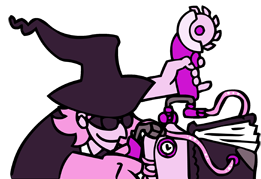reviewed by Ian Chung
Violence says nothing. Neither does language.
The poems in Cryptic Endearments, Howie Good’s latest collection from the Knives Forks and Spoons Press, are prefaced by a quote from Charles Simic: ‘Poetry: three mismatched shoes at the entrance to a dark alley.’ The line is taken from Simic’s Dime-Store Alchemy: The Art of Joseph Cornell, a meditation on the life and work of Cornell, well-known for his artworks that comprise boxed assemblages of found objects. Simic’s definition suggests that poetry can erupt from the accumulation of the ordinary made incongruous (hence three mismatched shoes, rather than just two) in the face of implied threat. Similarly, the impact of Good’s poetry often derives from its startling juxtaposition of what Dale Wisely calls ‘nightmarish and surreal images of dehumanization and oppression’, recounted in straightforward language that is a reflection of Good's journalistic background.
Individual parts of the poem need not obviously connect to each other, but can instead pile images upon each other to achieve something that operates as a deliberately dissonant, poetic whole.
Such images are threaded throughout Cryptic Endearments, particularly in those poems written in what might be thought of as Good’s signature form here, the three-part prose poem. The collection’s opener, ‘Prophets & Martyrs’, features ‘arms and legs that had been amputated and thrown out the window’. Turning the page over to ‘What Did the Doctor Say?’, one is confronted by ‘the endless black windows of empty streets’ and ‘the shaved heads of prisoners or raw recruits’. Thus violence bubbles under the surface of this poetry, or as Good puts it in ‘Broken Faces’, ‘The commandments are simple to state, but difficult to obey. Perhaps placing sharpshooters on the roof would help.’ It seems even the poet himself is not to be spared, e.g. ‘I am torn that I may heal’ (‘When Spring Comes Late’), although the qualification suggests that violence can perversely be productive as well as destructive.
However, this is not to imply that Cryptic Endearments is saturated in aggression alone. Another theme running through the collection is an inquiry into the power and purpose of language and poetry. This is hinted at early on by a poem like ‘Words in Three Acts’: ‘In the first act, people are just blobs of color. In the short second act, somebody you know and like is about to be betrayed by her superior. In the last act, how cynical of the sun to shine.’ It is tempting to view this poem as a sort of manifesto to explain Good’s interest in the three-part prose poem form. It may be thought of as a roadmap that accounts for the form’s effectiveness, in that the individual parts of the poem need not obviously connect to each other, but can instead pile images upon each other to achieve something that operates as a deliberately dissonant, poetic whole.
This attitude towards language’s image-making power is taken to an extreme in a poem like ‘Eterniday’:
At the end of the sentence was another sentence, & at the end of that sentence was another, & so on, until the moon rose, fox tails hanging off the handlebars.
The whole poem becomes an extended linguistic pun, an eternity of days strung out by the interminable sentences, until the emergence of the long-deferred nighttime moon, surreally accompanied by fox tails and handlebars. As easy it is for language to establish the illusion of an ‘eterniday’ within the poem, all it takes is a simple line ‘until the moon rose’ to undo that act. Yet elsewhere, Good displays a keen awareness of how language is not always infallible or malleable. In ‘The World is Running Down’, he writes:
Words can’t fix it, but, in the gray of morning, I lean over the keyboard and pretend again they can.
This misgiving concerning language is amplified into fears about the act of writing itself, e.g. ‘Today I wrote / nothing…’ (Bang!), ‘he used / to write poetry’ (‘The Worst’), ‘The kind of books I write / aren’t the kind that sell’ (‘My Life & Hard Times’). Nonetheless, Cryptic Endearments is also full of little acts of defiance that reassert the importance of poetry, often in the context of interpersonal connections: ‘The next morning, / I find her earring in bed / and poems everywhere’ (‘I Heart Anomalies’), ‘The best music is inaudible, / a little boy pedaling his bicycle / after a delivery van’ (‘Through a Glass Brightly’). If ‘The World is Running Down’ might be criticised as wilful self-delusion, ‘Occupy Poetry’ is a pointed rejoinder regarding the necessity of continuing to write and to share what is written, a plea that is particularly poignant given the information saturation many of us deal with daily:
If nobody tells anybody, how would anybody ever know?
The only problem I would raise with Cryptic Endearments is that structurally speaking, the sequence of the poems does not always act to reinforce their themes over a sustained stretch. This ‘dilution’ might have been intentional, since the reality is that life, from which the poems draw their imagery, is seldom tidy and thematically organised anyway. However, since the poems tend to feel like they begin and end elliptically in media res, sometimes literally—‘By three things is the world sustained, the rabbi says from the pulpit, and then names only the first two’ (‘Pulse’)—it can prove frustrating for a reader who is still trying to grasp what is going on, only to find that the poem has already reached its end. Perhaps this might form part of the collection’s appeal for the patient and careful reader, in that it needs to be read over and over, as different images catch the eye each time. Ultimately, as Good reminds us in his final poem, ‘Contingency’, ‘None of this could really happen, of course, until it does.’










